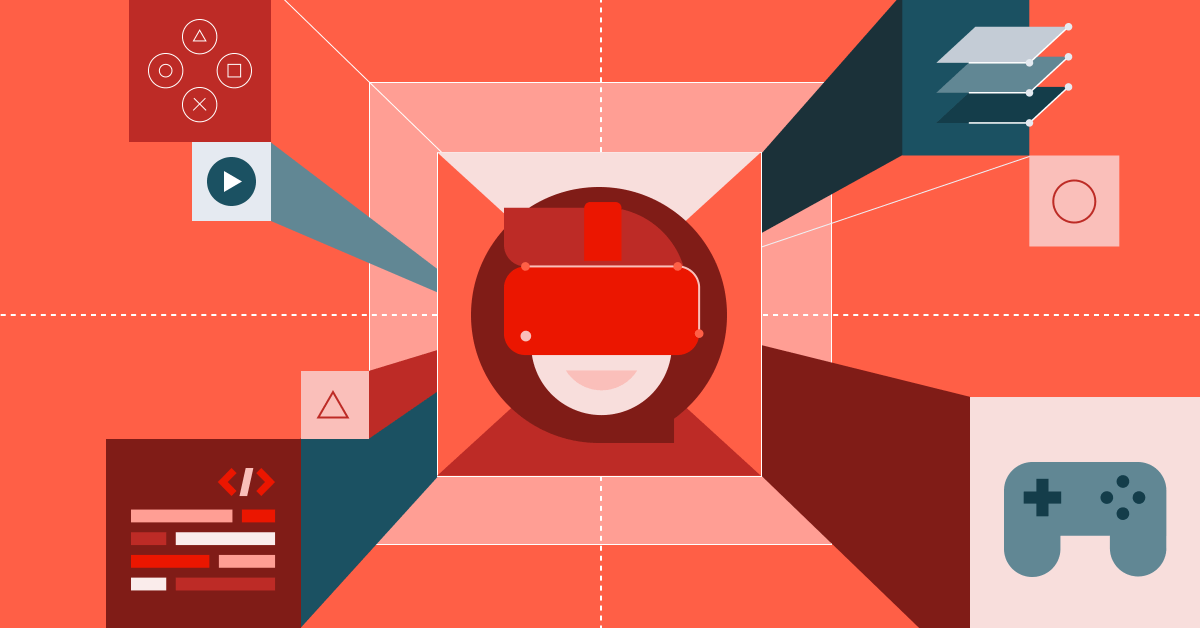Creating a Player Centric Experience in Games
How data can help with personalization, engagement and your games’ impact

Summary
- Player Centric Experience Mindset: One that looks at all interactions with a player (in-game and out of game) and seeks to ensure they have the best experience possible.
- A Data Platform is Needed: To enable near real-time insight, provide scalability as you grow, provide safe, governed and trustworthy data and enable insight creation across your whole organization.
- Example Use Cases Include: Churn Mitigation, Marketing Reengagement, Next Best Offer and Community Support
Introduction
Game developers have always looked to build ongoing relationships with its players to maximize the play they bring to the world, and the success of future titles, content and their company as a whole. As the industry continues to move from a premium, box focused, model to Games as a Service, Premium+, LiveOps, F2P, whatever you will, this relationship becomes all the more critical. Society, as a whole, the number of distractions available and a deluge of competing entertainment outlets necessitate change for the industry.
In this blog we posit that taking a player centric approach across all aspects of game development and player engagement is essential for success in this market going forward. For modern game marketers, a player-centric approach, powered by a robust Data Intelligence Platform, means moving beyond broad segmentation to individualized campaign targeting. It's about knowing which players are most receptive to specific offers, what their preferred channels are, and how to personalize messaging to maximize engagement and conversion. This requires a platform like Databricks that can unify player data and provide AI-driven insights.
Games are a special form of entertainment because they are interactive in nature. You do not consume a game, you engage with it, you embody it, you live out your fantasy through it, you engage in new experiences and you can direct its impact upon you. As a result of that interactivity it is all the more important that the experience be tailored to the player. When we say experience it isn’t necessarily, or limited to, gameplay: it’s about the full player experience with your game, your brand and your community. To create this single player view you need to integrate data from various sources: in-game behavior, campaign responses, social activity, support interactions. With this view you can create player marketing experiences that are targeted, as players receive information and offers that resonate with their specific preferences and journey stage.
We explore this across a series of viewpoints:
- What is player centric experience
- Core requirements for a player centric experience
- Examples of player centric experience projects
Defining Player Centric Experience
A player centric experience mindset is one that looks at all interactions with the player and seeks to ensure they have the best experience possible. This is true from the moment that they begin to engage with your brand, through purchase, ongoing value exchange and across generations of your games and their player circle. We seek to leverage the vast amounts of data that ultimately describe the player’s preferences, goals, demographics and playstyle to communicate with them in a manner that will best resonate.
We do this as an industry, and an art form, that is deeply invested in the experience and impact of our players. We have long recognized that there are different types of players out there. From Bartle’s MMORPG archetypes, to the impact of societal, geographic and community norms, to the exploration of player motivations by researchers worldwide. The diversity of players continues to grow as mobile phones, F2P and the proliferation of the internet have lowered barriers for new players to engage. In fact nearly everyone born today will be a gamer. As an industry we recognize the value of play to the world and the importance of what we build. Games are a source of fun, but they’re also a source of escape for approximately 37% of global players. To ensure that our games have the most impact possible on our target players, we have to speak to THEM.
This is not to say that you have to be everything to everyone. You will have a target audience and a group of players that you are seeking to serve. With a player centric experience you are making the decision to serve that playerbase but to do so in the best way you can. You may choose to, for example, have a single punishing difficulty level for your players as it is critical to the art you are creating. You understand that will shrink your audience. The goal of player centric experience would be, here, to ensure that the rest of the experience keeps the player engaged. Does your messaging (marketing) speak to that audience? Does it require balancing to achieve the goals and experience we had in mind? Does the game recognize your preferences for quests to help you explore what you find fun? Does it factor in your play experience to frame why the next DLC is worth your time? Does it further your play and maximize the desire to engage with your game?
Core requirements for a player centric experience
In order for any of these efforts to be successful there’s one key first project to tackle: Know your player. As a general rule of thumb, as these insights are going to be used broadly across the organization, the closer to near real time this data is, the better. For this discussion we are primarily interested in player level data and insight, not aggregations or overarching metrics. If interested in considerations when building a data strategy that supports a player centric experience, we go into great detail on this topic in our Designing a Modern Data Strategy for Premium+ Games.
To optimize user acquisition and marketing, 'knowing your player' efforts must go beyond basic demographics. It requires understanding their motivations, preferred playstyles, social connections, and potential lifetime value. A unified data platform helps marketing teams uncover these insights through advanced analytics and machine learning, enabling them to create comprehensive player profiles and enact highly targeted, optimized user acquisition campaigns.
This begins with gathering player and game datasets including:
- Quantitative: Progression, entitlement, transactional, experiential and demographics
- Qualitative: Surveys, player feedback, customer support, chat and user research
- Telemetric: Quality of service, matches, sessions and gameplay
With the data collected you can now augment player records considering:
- Engagement: Session details, entitlement, milestone achievement, ELO, play times and preferences
- Segmentation: Heuristic groupings like pLTV Category, Payer/NoPayer, Ads/NoAds, cohort, geography
- Player Level Insights: Churn risk, pLTV, cross platform and account identity
- Experiential Insight: Playstyle cluster, toxicity rating, happy rating,
From a data platform perspective there are a few goals to keep in mind:
- Near real time insight: The data and insight described above will power a litany of use cases across your studio. While some of those don’t require the most up to date information, many of them will
- Easy to maintain and grow: The requirements from development and your lines of business will only grow over time. If too much of your time is spent maintaining the past, you can’t build the future
- Scalability: You will inevitably continue to grow the amount of data that your platform processes over time. Just as you have to ensure your matchmaker doesn’t fall over when you launch you need to ensure that your platform can handle whatever you throw at it over time
- Alignment to value generation: Fixed cost solutions tend to be sticky upwards for cost and will eventually put you in a position where you have to choose between turning the game off or losing money. If your usage and costs align with the scale of your playerbase you will be able to keep your community together longer.
- Safe, secure, governed and trustworthy: Your player data is not only valuable to your business, but it is also highly sensitive to your community. Beyond obvious regulatory considerations, a breach or misuse of that data will erode the relationship you worked so hard to build with your players. Additionally by ensuring governance, lineage and quality you can ensure that derived insight is trusted by your teams.
- Enables insight investigation across the organization: Your data platform should make it easy to work with your data, to access, locate and interrogate your data. It should enable all teams, technical or otherwise, to do so. It’s the end users, the developers, marketers, revenue analysts and live operations groups that best understand the data and its value. Don’t overload a central team.
Examples of unlocked player centric experience projects
To further the high level proposed definition we’ve selected a subset of player centric use case examples that frame the aforementioned goals and capabilities.
Churn Mitigation
One of the harder use cases out there but outside of recommendation engines, the most asked about from game developers. We’re specific here to call out mitigation, not detection, as the goal isn’t to know that someone has left but, instead, to influence the decision to stop playing your experience. For marketing, churn mitigation is about identifying at-risk players early and re-engaging them with targeted offers, personalized content and tailored messaging. With a data intelligence platform marketers leverage predictive models that consider the individual player’s experience to automate personalized re-engagement campaigns in a player centric manner.
By considering the details of the player’s last session, or last three sessions, and comparing it to those of their average session’s details you can find anomalous behavior for the player: Are current sessions shorter than normal, are they winning more or less, is time between sessions increasing? While you may leverage heuristic based re-engagement techniques in near real time, this is often a use case that is done in batch and might be supplemented by an LLM to locate these variances and can be done in a batch manner (daily, twice a day, etc).
This approach can also be applied early in the player experience to try and locate potential churn risks on D0. How did their play experience vary as compared to those who have not churned and those that did? How big is their risk to churn as a result of their engagement with the FTUE?
Imagine, if you will, that you have identified someone that you think has a high chance of churning, what next? This is where the player centric experience really comes into play. The standard response would be to send them the same marketing reengagement content, notifications or offers that everyone receives. Doing this sooner than you previously did will improve your outcomes, but even better is taking all of this insight that you have about your player and using it as part of that re-engagement. Did their game crash? Did they lose against a specific meta build? Did they miss the content that most people from that marketing campaign enjoyed the most?
By integrating the above into your attempt to re-engage you will have a greater impact. “We miss you,” turns into “you’re 20 minutes away from this milestone” which you’ve identified they’ll likely enjoy. “Here’s 100 virtual currency units” becomes “Here’s 170 units that could get you XYZ item for free and provide ABC benefit or enjoyment.” Finally “appears you’re having trouble with our game” becomes “You’ve encountered this op meta a lot, here’s a video that can help you counter it.” Not only are you showing the player that you understand them, that you value them but you are also helping them get more enjoyment from the experience. It’s about them, not about you.
This is an example of closing the loop one that could be part of an agentic AI system. You’ve:
- Taken in details about the player’s experience,
- augmented that data to generate insight (e.g. they might churn),
- Leveraged LLMs and other technology to generate an actionable response, and
- Fed that back into a re-engagement method (email, BaaS/HeroicLabs, CDP/Braze)
Next best _______
One of the most impactful personalization projects that you can tackle that, often, doesn’t require changes to the game experience itself is introducing recommendation engines. When Mojang implemented their recommendation engine (for content) they saw a 2.5X increase in click through rates. This meant more people playing more content and staying more engaged. The most common implementation of recommendation engines, especially at the start, is that of the recommendation carousel. The idea is that you can only show 3-5 offers to a player at any given time without overwhelming them: but which ones? This is where you’re going to take advantage of your clusters, segmentation, recent player experience and current entitlements. The goal is to drive greater player engagement by determining the thing that speaks most to the player and deliver it through personalized offers and content recommendations.
The initial use case considered here is that of purchase offer recommendations, store ordering and aligning offers that the player will value to each player. This is a great, first, example of how recommendation engines and Next best offer projects apply to games, but don’t stop there. The goal of these systems is to align the right offer/value to the right player. In addition to purchasable offers this could include: best clan, next best friend, UGC content suggestions, difficulty balancing, next best quest, next best in-game decision, next best character or playthrough. If you sit back and think: different players are going to have different preferences while making this next decision then a player centric recommendation effort applies.
The deeper it is integrated into the gameplay, the more effort it will take to implement, particularly if you didn’t think about customizability while building the title. You might be able to personalize the experience but the ultimate impact on the player experience may not be worth the development effort. For this reason: remarketing, play summaries, next best (purchase) offer, next best experience projects tend to be the first that are tackled.
Community Support
While there are countless others, the last example we’ll dig into is supporting your community in a player centric manner. Here the focus is ensuring that players have the best possible experience resolving whatever issue might have occurred that has them reaching out. The reality is that few community managers can handle 100% of requests in a timely manner. Leveraging a standard reply-bot that effectively says “we heard you, maybe we’ll reply” will increase your chances of their churning, but is still quite commonly done.
RAG based chatbots can improve the experience for L1 or L2 questions by making it less obvious that a machine has responded. By training the bots on player feedback and support interactions, community management teams can enhance player experience providing instant personalized support, targeted gameplay suggestions and in-game offers. Developers can go a step further with an agentic AI system that does the above and then takes immediate action to solve the player’s concerns.
With the above taken into consideration the final best practice that we see used is multi-pathing. Is this player a high value (financially, socially or highly networked) player? If so, perhaps their tickets are prioritized in the queue, or sent through a different queue entirely. If you’ve built out the RAG and/or agentic system your community manager may use that same interface internally to gather the information needed for the interaction but then translate it into a more personable interaction. By doing this you ensure the best result for these players, are able to scale and can iterate on your chatbot through feedback on the responses from your own employees.
Getting started
As stated initially there are two key requirements when creating a player centric experience: gathering the right data in a near real-time fashion and having a platform that makes it easy for you to make use of it. Databricks can make player centric experience projects possible, cost effective and easier over time. If you’d like to learn more about how Databricks helps game companies with these, and other, use cases check out databricks.com/games or reach out to your account executive. You can also learn more about Data, AI and Games in our eBook, or our solution accelerators.
Thank you for serving the players of the world, it means a lot to us all here at Databricks.
Huntting Buckley, GTM Leader
Games @ Databricks

